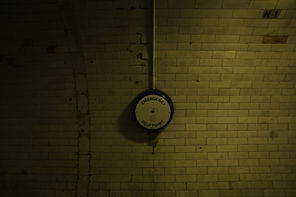Hi. I'm a multidisciplinary designer with an interest in spatial design, architectural research and all the weird and wonderful projects.
I'm currently working on architectural research surrounding climate change - in particular, responses in urban design and architecture towards the rising sea levels.
I have worked on interactive and experience design - all heavily grounded in design theory and user research as well as other spatial design projects for more commercial practices.
Take your time going around this website, help yourself to the extra bits with some cool zines, writings and other fun stuff.
I guess that's all for now~

voided//shelters
Inhabiting fiction:
This project aims to reidentify the perception of war by examining its various identities through historical developments. Memories and perceptions of events are explored through “fictional truths” recounted by individuals, literature, and art highlighting the socio-political entanglements that affect design approaches and function. Through the lens of architecture and fiction, I set out to uncover the buried footprints of war that exist within cityscapes that were shaped by these perceptions with the intent of reclaiming the identities of spaces through reinhabitation.
How do we inhabit fiction?
Exploring the physicality of warfare through architecture.

Inhabiting Fiction identifies the buried footprints of war that still exist in urban landscapes to redefine the perspectives of this defensive architecture. Research presented through the website is used to understand the identity of warfare, reconsider perspectives, memories and relocate architecture to explore the possibilities of re-inhabitation through fictional narratives.
The project compares the creation, functions and subsequent modification of spaces during and after wars, analyzing the differences between these identities in Singapore and London, focusing on the dichotomy between recreational and defensive spaces.
Perceiving Architecture

The aim of my concept is to change the perception people might have towards war architecture. Through spatial interventions that do not necessarily mask this identity of defense and aggression, but rather harmonize spatial experiences with it so that that will seem natural or at least intriguing (in a positive, child-like sense) in those situations.
My research was integral in this project. This is especially because I have never been in a setting of conflict, neither have I personally experienced this perception of fear and exploration of spaces. Therefore, I relied heavily on primary and secondary research that gave me an understanding of the various perceptions of war, its creation, fear and its impact on people, society and infrastructure. Furthermore, I tracked down different types of spaces and architecture that showed different views on the remnants of war as well as how they have adapted, morphed or been destroyed over time and the purpose of these courses of action over the years.
This thorough understanding of war, destruction, memories, architecture as well as fictional references helped me build as realistic an understanding of the past present and future of warfare, perspectives and technical understanding of situations and spaces. This knowledge was then “digested” and intuitively applied towards designing interventions for spaces with an understanding of its greater historical context and sensitivity towards the remnants of war.




























